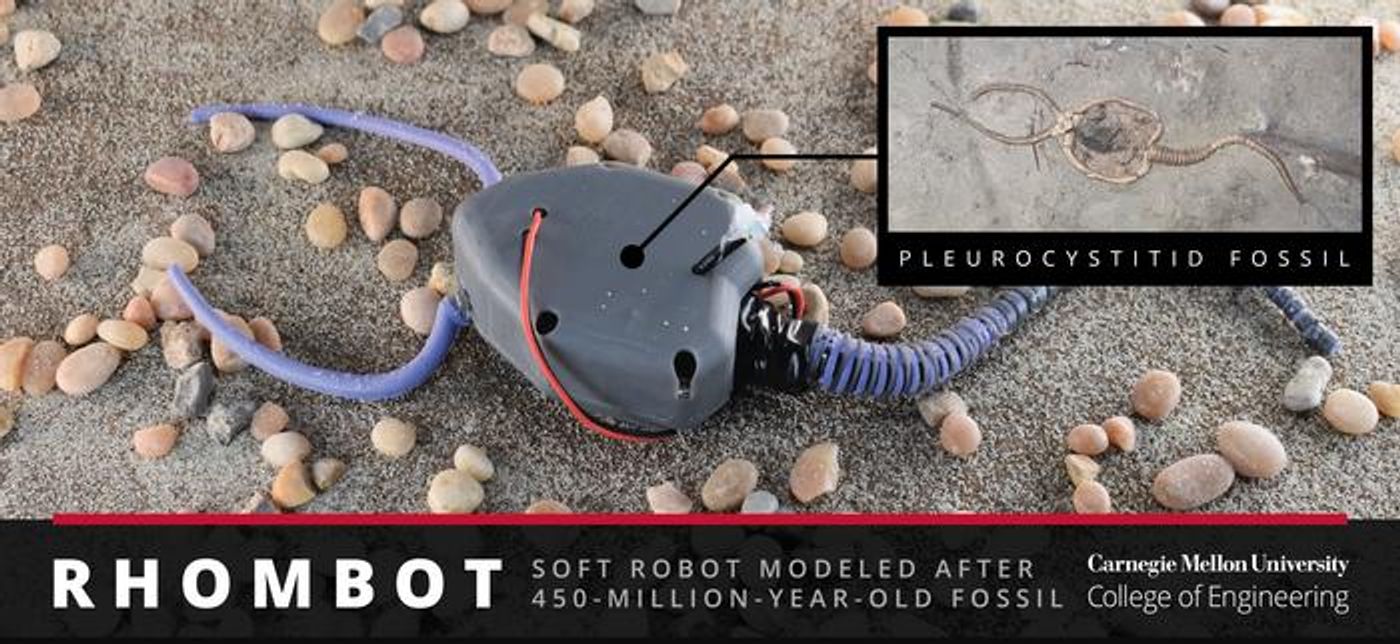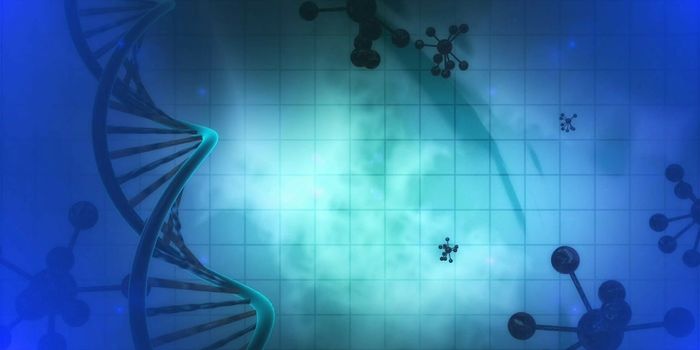Softbotics and the Past: Engineering the Movement of 450-Million-Year-Old Organisms
A recent study published in the Proceedings of the National Academy of Sciences examines the use of Softbotics to mimic the movements of the ancient marine organism, pleurocystitid, which is estimated to have existed approximately 450 million years ago and is believed to be one of the first marine invertebrates to control their movements with a muscular stem. This study was led by researchers from Carnegie Mellon University and holds the potential to help scientists use a new field known as Paleobionics to better understand the evolutionary history of extinct organisms with paleontological evidence.
Image of a Pleurocystitid fossil (inset) and the pleurocystitid robot replica developed for the study. (Credit: Carnegie Mellon University College of Engineering)
“Softbotics is another approach to inform science using soft materials to construct flexible robot limbs and appendages,” said Dr. Carmel Majidi, who is a Professor of Mechanical Engineering at Carnegie Mellon University and lead author of the study. “Many fundamental principles of biology and nature can only fully be explained if we look back at the evolutionary timeline of how animals evolved. We are building robot analogues to study how locomotion has changed.”
For the study, the researchers built a rhombiferan robot, which they call a “Rhombot”, and with a combination of computer simulations were able to determine that pleurocystitids were able to traverse the sea floor by means of sweeping motions using a muscular stem. Additionally, they also found that the longer the stem, the greater the organism’s speed without sacrificing more energy in the process. Going forward, the team aspires to use Softbotics to study other extinct organisms, such as the first organisms that went from sea to land, which traditional robotic hardware can’t achieve.
“Bringing a new life to something that existed nearly 500 million years ago is exciting in and of itself, but what really excites us about this breakthrough is how much we will be able to learn from it,” said Dr. Phil LeDuc, who is a Professor of Mechanical Engineering at Carnegie Mellon University and a co-author on the study. “We aren’t just looking at fossils in the ground, we are trying to better understand life through working with amazing paleontologists.”
What new discoveries will researchers make about Softbotics and extinct organisms in the coming years and decades? Only time will tell, and this is why we science!
As always, keep doing science & keep looking up!
Sources: Proceedings of the National Academy of Sciences, Carnegie Mellon University, EurekAlert!, Britannica









